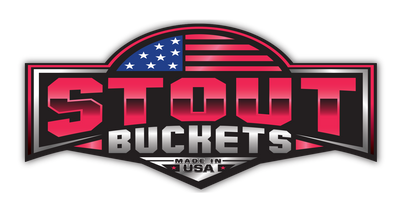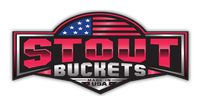Best Practices for Cleaning Skid Steer Attachments

Your skid steer works as hard as you do. Whether it’s clearing debris, grinding stumps, or moving heavy loads, these machines make tough jobs easier. Taking good care of your skid steer means paying attention to every part of it, including the attachments. Cleaning them might feel like an extra chore, but doing it right can extend their lifespan and ensure peak performance.
With these simple tips, you can keep your attachments in great condition and ready for anything you throw their way.
Don’t Skip Cleaning
Dirt, mud, debris, and grease build up quickly, especially if you’re working in challenging conditions. If left alone, that residue can lead to rust, premature wear, and performance issues. Regular cleaning doesn’t just maintain the look of your attachments; it also helps preserve their functionality and increases their overall longevity.
After every job, set aside a few minutes to clean your attachments before storage. It’s a small investment of time with a big payoff.
Wash Sharp Edges Carefully
Skid steer attachments are large and often come with sharp edges and moving parts that can cause injury if mishandled. Always disconnect attachments from the skid steer before beginning any cleaning or maintenance tasks.
Wear heavy-duty gloves to protect your hands from sharp surfaces and debris, and ensure you’re working in a well-lit area to spot hard-to-see grime.
Use the Right Tools
Cleaning skid steer attachments requires the right equipment to get the job done efficiently and safely.
Pressure Washer

A pressure washer is one of the most efficient tools for cleaning skid steer attachments. The high-powered water stream can quickly blast away caked-on dirt, mud, and smaller debris, including material lodged in hard-to-reach crevices.
When using a pressure washer, it’s essential to handle it carefully to avoid causing damage to the attachments. Avoid using excessive pressure around seals, joint areas, or hydraulic lines, as the force of the water could dislodge or compromise these sensitive parts.
Instead, focus on high-traffic and exposed surfaces, gradually moving closer to harder-to-reach sections as needed. For stubborn debris, consider adjusting the nozzle for a more concentrated spray, but always prioritize safe pressure levels to protect your equipment.
Brush or Scraper
A stiff-bristled brush is ideal for scrubbing dirt and mud from flat or textured surfaces, such as the underside of buckets or the edges of hydraulic arms. It’s also a great tool for cleaning areas where water pressure alone might not be enough to remove encrusted material. For tough-to-remove debris, such as hardened soil or concrete residue, you can use a scraper to loosen compacted material.
When using a scraper, opt for one with a durable but non-damaging edge to avoid scratching delicate surfaces or removing paint. Apply gentle yet firm pressure, and work methodically to avoid damaging joints, seals, or painted areas. For curved or hard-to-reach sections, smaller brushes or handheld tools can help provide precision cleaning.
After using a brush or scraper, follow up with a rinse using your pressure washer to remove any debris that you loosened during the manual cleaning process. This step ensures that no residue is left behind, keeping your attachment ready for its next use.
Remove Excess Grease
Grease and oil build-up can be a real nuisance if not properly managed. Over time, you’ll have sticky, hard-to-clean surfaces that can lead to bigger problems down the line. The grease build-up can interfere with functionality, making it harder for parts to move smoothly and increasing wear and tear.
A good degreasing solution is your best ally in tackling stubborn grease. Start by spraying it evenly over the affected areas. Let the solution sit for a few minutes to break down the tough residue. Once the solution has had time to work its magic, wipe down the surface with a clean cloth or scrub gently if needed. Finish by rinsing thoroughly to remove any leftover residue, ensuring a clean and grease-free surface.
Dry All Parts Completely
In order to prevent rust, thoroughly drying the attachment off is another best practice for cleaning skid steer attachments. After washing, take the time to ensure your skid steer attachments are completely dry before storage.
Start by using a clean absorbent cloth to wipe down all visible surfaces, paying extra attention to flat areas and edges where water might collect. For joints, crevices, or other hard-to-reach spaces, use compressed air to blow out hidden moisture. If possible, allow the attachments to air dry in a well-ventilated space.
Lubricate After Cleaning
Proper lubrication is crucial for reducing friction, preventing wear and tear, and extending the lifespan of your equipment. It also helps protect against rust and corrosion, particularly if you use the attachments in wet environments.
Be sure to use a lubricant that is specifically designed for your equipment to avoid build-up or damage. Apply evenly and wipe away any excess to prevent dirt or debris from sticking to the surface.
Conduct Regular Inspections

After cleaning, take time to inspect your attachments for wear, damage, or potential issues. Pay close attention to critical components such as the blades, teeth, hydraulics, hoses, and any moving parts. Look for signs of wear, rust, cracks, or loose fittings that might require attention. Blades and teeth may need sharpening, realignment, or even replacement to ensure optimal performance.
Don’t forget to inspect bolts, pins, and connections to ensure everything is secure and functioning properly. Lubricate any moving parts as necessary to reduce friction and prevent long-term damage. For hydraulic attachments, check for leaks, damaged seals, or abnormal wear on fittings and hoses. Addressing these issues promptly can extend the life of your equipment and prevent downtime on the jobsite.
Catching minor problems early can save you from costly repairs or replacements down the road. Regular inspections not only improve safety but also give you peace of mind, knowing your equipment is in peak condition before taking it out for your next job.
With these best practices for cleaning skid steer attachments in mind, you’ll extend the lifespan of your equipment, improve its performance, and avoid unnecessary downtime. Whether you’re taking care of a bucket, a grapple, or a stump grinder attachment for your skid steer, consistent cleaning and maintenance make a world of difference.


